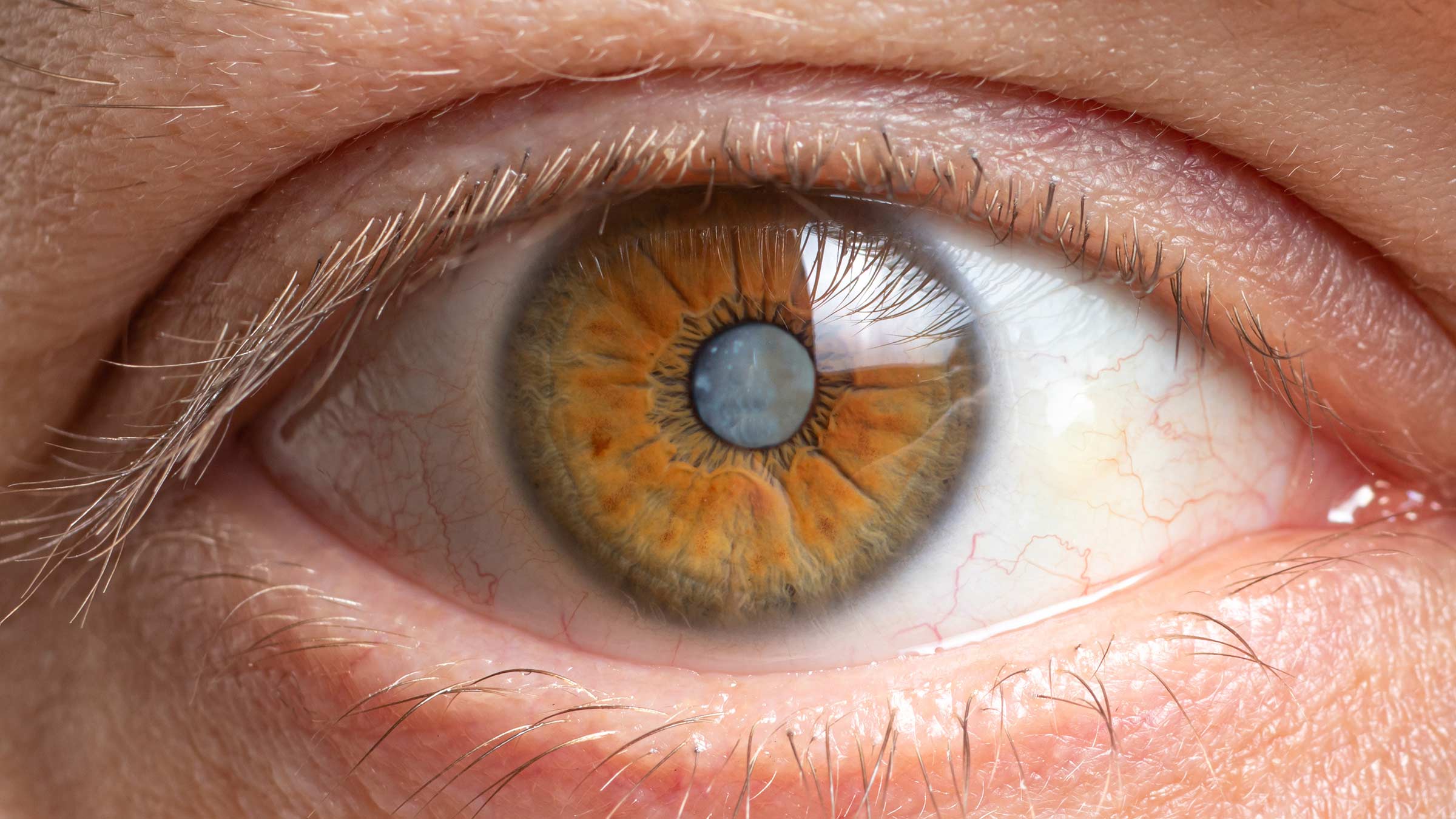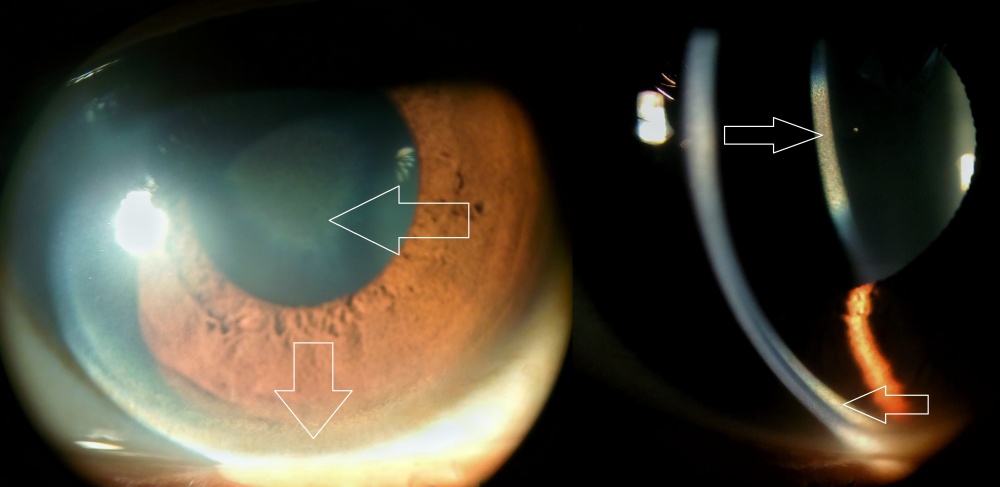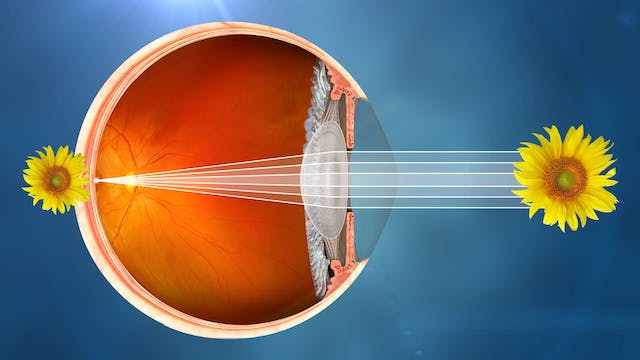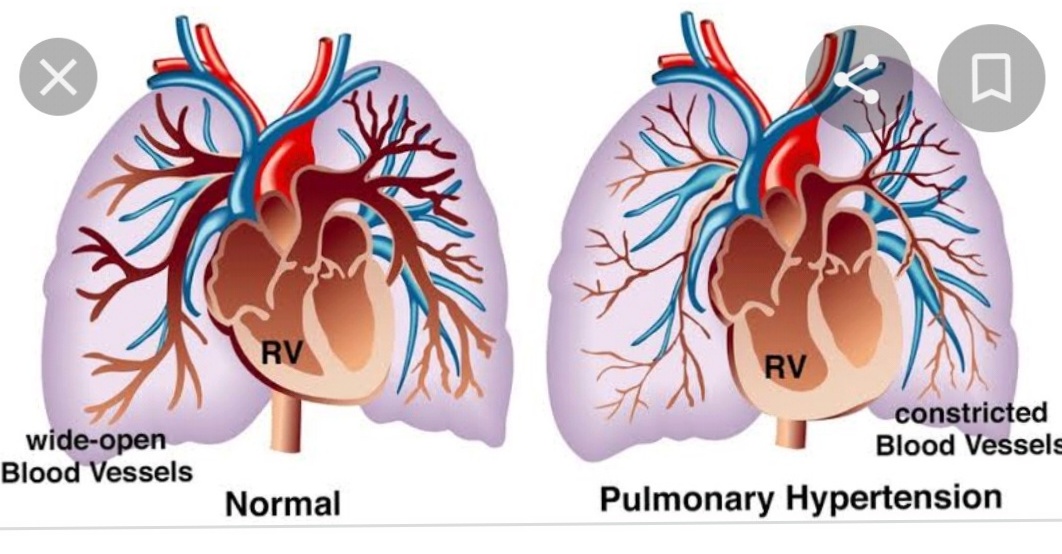“Sunflower Cataract – Causes, Symptoms & Treatment”
-By ENT specialist doctor-Dr Sagar Rajkuwar, Nashik ,Maharashtra ,India
Clinic website-www.entspecialistinnashik.com
Table of contents-
1)Introduction
2)Defining Sunflower Cataract
3)How Is It Different From Other Cataract Types?
4)Signs And Symptoms
5)Causes
6)Diagnosis
7)Treatment
8)Prevention
9)Conclusion


1)Introduction
Have you ever witnessed a landscape that seemed to shimmer with a golden hue? If you have, it’s possible you encountered sunflower cataract, an uncommon eye condition that impacts only 1 in every 100,000 individuals. Sunflower cataract is marked by the lens in the eye turning yellow, which can cause a decline in vision and potentially result in blindness. While there is currently no known cure, prompt diagnosis and intervention can assist in avoiding additional vision impairment. In this article, we will explore the signs and available treatment choices for this ailment.
2)Defining Sunflower Cataract
The name “sunflower cataract” gives a clear indication of one of its main features: the lens of the eye turns yellow. For individuals affected by this condition, their perception of the world shifts to a golden hue due to this color alteration. While it may sound appealing, having a sunflower cataract can pose significant challenges in day-to-day life. Picture navigating through life as if you are looking through a yellow lens – distinguishing between colors and shapes becomes difficult, leading to a notable decline in vision.
There are two categories of sunflower cataract: congenital and acquired.
- Congenital sunflower cataract is evident at birth, resulting from a genetic mutation inherited from parents.
- Conversely, acquired sunflower cataract may emerge due to factors such as diabetes, specific medications, or exposure to ultraviolet light.
Regardless of the underlying cause, both forms of sunflower cataract exhibit similar symptoms. If you notice any of these signs, it’s essential to consult an eye specialist promptly. Timely diagnosis and intervention are vital to prevent additional vision complications.
3)How Is It Different From Other Cataract Types?
It’s well-known that cataracts come in various forms, each presenting its unique symptoms and treatment approaches. What makes sunflower cataract stand out from the others?
To begin with, while most cataracts are generally painless, sunflower cataract can result in a burning or itching feeling in the eyes. Additionally, individuals with sunflower cataract commonly report a heightened sensitivity to light and issues like blurred or double vision. Such symptoms can significantly hinder daily tasks, including driving and reading.
Moreover, another significant distinction is that sunflower cataract typically impacts both eyes, whereas many other cataract types usually affect just one.
Finally, it’s crucial to remember that sunflower cataract is an uncommon condition. Therefore, if you are facing any of these symptoms, seeking immediate attention from an eye specialist is essential for accurate diagnosis.
4)Signs And Symptoms
Sunflower cataract is linked with several notable signs and symptoms. As previously mentioned, one of its most recognizable features is the yellow tinting of the eye lens, which can result in diminished vision. Additionally, those with sunflower cataract frequently face intensified sensitivity to light, along with blurred or double vision. These challenges can complicate daily activities, such as reading or driving.


Another important symptom is that sunflower cataract usually impacts both eyes, unlike other cataracts that tend to affect one eye.
Furthermore, the manifestations of sunflower cataract can vary depending on its type. For instance, individuals with congenital sunflower cataract may not notice any symptoms, while those with the acquired form might feel a burning or itching sensation in their eyes. If you are experiencing such symptoms, it is vital to consult an eye doctor promptly for an accurate assessment.
5)Causes
It is well-known that our eyes are among the most delicate organs in the human body, so it is understandable that various factors may contribute to this condition.
As previously mentioned, there are two categories of sunflower cataracts: congenital and acquired. Congenital cataracts are evident at birth, while acquired cataracts develop later in life. The origin of the congenital type remains unclear, though it is thought to be linked to genetic changes.
Conversely, acquired sunflower cataracts can result from diabetes, certain medications, or exposure to ultraviolet light. While the causes vary, both types exhibit the same symptoms.
Additionally, improper or excessive use of contact lenses can also result in sunflower cataracts. This is because contact lenses may irritate and inflame the cornea, the eye’s clear outer layer. Consequently, this irritation can lead to a build-up of proteins in the lens, potentially resulting in cataracts.
If you notice any signs of cataracts, it’s essential to consult an eye specialist promptly for an accurate diagnosis. Timely diagnosis and treatment are vital in preventing further vision challenges.
6)Diagnosis
Cataract diagnosis generally begins with a thorough eye examination. This allows your doctor to assess your eyes more effectively and determine the presence of cataracts.
During this examination, your doctor will inquire about your symptoms and medical history. They will also conduct a visual acuity test to evaluate your vision at various distances. Additionally, they may dilate your pupils for a clearer view of the back part of your eye.
If cataracts are suspected, your doctor might refer you to an ophthalmologist for additional assessment. An ophthalmologist specializes in eye health.
At this appointment, the ophthalmologist will carry out a set of tests to verify the diagnosis. These tests could include a visual field test for peripheral vision and an A-scan to measure your eye’s length.
Once the diagnosis is confirmed, your doctor will review treatment options available to you.
7)Treatment
Sadly, there is currently no definitive cure for sunflower cataract. Nonetheless, there are multiple treatment possibilities that may enhance your visual clarity.


One approach is to utilize specialized contact lenses designed to filter out yellow light. Alternatively, you could consider surgery to extract the impaired lens and replace it with a synthetic one. Although surgery tends to be the most effective option, it is also generally the priciest.
Other methods to manage this condition include:
Wearing sunglasses or a wide-brimmed hat while outside
Applying anti-glare filters on computers and other electronic devices
Steering clear of overly bright lights
Reducing your exposure to ultraviolet rays
Taking regular breaks while using the computer or reading
If you have sunflower cataract, scheduling routine visits with an eye specialist is crucial. This practice will help monitor the condition and prevent it from worsening, which could lead to further vision impairment. With appropriate care, many individuals with sunflower cataract can lead fulfilling, healthy lives.
8)Prevention
To reduce the risk of developing sunflower cataract, consider measures such as wearing sunglasses or a hat outdoors and minimizing ultraviolet light exposure. Additionally, if you have diabetes, it’s vital to manage your blood sugar and have consistent check-ups with your healthcare provider. If you wear contact lenses, ensure they are cleaned thoroughly, and avoid sleeping while wearing them. By adhering to these straightforward guidelines, you can help protect against sunflower cataract and preserve your eyesight.
9)Conclusion
To summarize the information presented, it is clear that sunflower cataract is an eye disorder that is frequently misinterpreted. It is commonly confused with other issues, including macular degeneration. Nevertheless, this cataract is distinct and may give your surroundings a golden hue.
If you are noticing any signs of this condition, it is crucial to consult an eye specialist immediately for an accurate evaluation. Timely diagnosis and intervention are essential to avoid additional vision complications. With appropriate care, the majority of individuals with this condition can lead normal, healthy lives.
FOR INFORMATION IN GREAT DETAIL ON Cataract meaning PL CLICK ON THE LINK GIVEN BELOW-It Is Always Better To View Links From Laptop/Desktop Rather Than Mobile Phone As They May Not Be Seen From Mobile Phone. ,In Case Of Technical Difficulties You Need To Copy Paste This Link In Google Search. In Case If You Are Viewing This Blog From Mobile Phone You Need To Click On The Three Dots On The Right Upper Corner Of Your Mobile Screen And ENABLE DESKTOP VERSION.
FOR INFORMATION IN GREAT DETAIL ON Cataract Surgery PL CLICK ON THE LINK GIVEN BELOW-It Is Always Better To View Links From Laptop/Desktop Rather Than Mobile Phone As They May Not Be Seen From Mobile Phone. ,In Case Of Technical Difficulties You Need To Copy Paste This Link In Google Search. In Case If You Are Viewing This Blog From Mobile Phone You Need To Click On The Three Dots On The Right Upper Corner Of Your Mobile Screen And ENABLE DESKTOP VERSION.
FOR INFORMATION IN GREAT DETAIL ON What are the 3 types of cataract surgery PL CLICK ON THE LINK GIVEN BELOW-It Is Always Better To View Links From Laptop/Desktop Rather Than Mobile Phone As They May Not Be Seen From Mobile Phone. ,In Case Of Technical Difficulties You Need To Copy Paste This Link In Google Search. In Case If You Are Viewing This Blog From Mobile Phone You Need To Click On The Three Dots On The Right Upper Corner Of Your Mobile Screen And ENABLE DESKTOP VERSION.
FOR INFORMATION IN GREAT DETAIL ON How long to wear eye shield at night after cataract surgery PL CLICK ON THE LINK GIVEN BELOW-It Is Always Better To View Links From Laptop/Desktop Rather Than Mobile Phone As They May Not Be Seen From Mobile Phone. ,In Case Of Technical Difficulties You Need To Copy Paste This Link In Google Search. In Case If You Are Viewing This Blog From Mobile Phone You Need To Click On The Three Dots On The Right Upper Corner Of Your Mobile Screen And ENABLE DESKTOP VERSION.
FOR INFORMATION IN GREAT DETAIL ON Cataract Symptoms PL CLICK ON THE LINK GIVEN BELOW-It Is Always Better To View Links From Laptop/Desktop Rather Than Mobile Phone As They May Not Be Seen From Mobile Phone. ,In Case Of Technical Difficulties You Need To Copy Paste This Link In Google Search. In Case If You Are Viewing This Blog From Mobile Phone You Need To Click On The Three Dots On The Right Upper Corner Of Your Mobile Screen And ENABLE DESKTOP VERSION.
FOR INFORMATION IN GREAT DETAIL ON Cortical cataract PL CLICK ON THE LINK GIVEN BELOW-It Is Always Better To View Links From Laptop/Desktop Rather Than Mobile Phone As They May Not Be Seen From Mobile Phone. ,In Case Of Technical Difficulties You Need To Copy Paste This Link In Google Search. In Case If You Are Viewing This Blog From Mobile Phone You Need To Click On The Three Dots On The Right Upper Corner Of Your Mobile Screen And ENABLE DESKTOP VERSION.
FOR INFORMATION IN GREAT DETAIL ON Cataract Surgery Recovery Time PL CLICK ON THE LINK GIVEN BELOW-It Is Always Better To View Links From Laptop/Desktop Rather Than Mobile Phone As They May Not Be Seen From Mobile Phone. ,In Case Of Technical Difficulties You Need To Copy Paste This Link In Google Search. In Case If You Are Viewing This Blog From Mobile Phone You Need To Click On The Three Dots On The Right Upper Corner Of Your Mobile Screen And ENABLE DESKTOP VERSION.
FOR INFORMATION IN GREAT DETAIL ON Difference between glaucoma and cataract PL CLICK ON THE LINK GIVEN BELOW-It Is Always Better To View Links From Laptop/Desktop Rather Than Mobile Phone As They May Not Be Seen From Mobile Phone. ,In Case Of Technical Difficulties You Need To Copy Paste This Link In Google Search. In Case If You Are Viewing This Blog From Mobile Phone You Need To Click On The Three Dots On The Right Upper Corner Of Your Mobile Screen And ENABLE DESKTOP VERSION.
FOR INFORMATION IN GREAT DETAIL ON Congenital Cataract PL CLICK ON THE LINK GIVEN BELOW-It Is Always Better To View Links From Laptop/Desktop Rather Than Mobile Phone As They May Not Be Seen From Mobile Phone. ,In Case Of Technical Difficulties You Need To Copy Paste This Link In Google Search. In Case If You Are Viewing This Blog From Mobile Phone You Need To Click On The Three Dots On The Right Upper Corner Of Your Mobile Screen And ENABLE DESKTOP VERSION.
FOR INFORMATION IN GREAT DETAIL ON What are the disadvantages of cataract surgery PL CLICK ON THE LINK GIVEN BELOW-It Is Always Better To View Links From Laptop/Desktop Rather Than Mobile Phone As They May Not Be Seen From Mobile Phone. ,In Case Of Technical Difficulties You Need To Copy Paste This Link In Google Search. In Case If You Are Viewing This Blog From Mobile Phone You Need To Click On The Three Dots On The Right Upper Corner Of Your Mobile Screen And ENABLE DESKTOP VERSION.
FOR INFORMATION IN GREAT DETAIL ON Congenital Cataract Treatment In Adults PL CLICK ON THE LINK GIVEN BELOW-It Is Always Better To View Links From Laptop/Desktop Rather Than Mobile Phone As They May Not Be Seen From Mobile Phone. ,In Case Of Technical Difficulties You Need To Copy Paste This Link In Google Search. In Case If You Are Viewing This Blog From Mobile Phone You Need To Click On The Three Dots On The Right Upper Corner Of Your Mobile Screen And ENABLE DESKTOP VERSION.
FOR INFORMATION IN GREAT DETAIL ON Congenital Cataract Causes PL CLICK ON THE LINK GIVEN BELOW-It Is Always Better To View Links From Laptop/Desktop Rather Than Mobile Phone As They May Not Be Seen From Mobile Phone. ,In Case Of Technical Difficulties You Need To Copy Paste This Link In Google Search. In Case If You Are Viewing This Blog From Mobile Phone You Need To Click On The Three Dots On The Right Upper Corner Of Your Mobile Screen And ENABLE DESKTOP VERSION.
FOR INFORMATION IN GREAT DETAIL ON How long between cataract surgery on each eye PL CLICK ON THE LINK GIVEN BELOW-It Is Always Better To View Links From Laptop/Desktop Rather Than Mobile Phone As They May Not Be Seen From Mobile Phone. ,In Case Of Technical Difficulties You Need To Copy Paste This Link In Google Search. In Case If You Are Viewing This Blog From Mobile Phone You Need To Click On The Three Dots On The Right Upper Corner Of Your Mobile Screen And ENABLE DESKTOP VERSION.
FOR INFORMATION IN GREAT DETAIL ON Posterior Subcapsular Cataract Treatment PL CLICK ON THE LINK GIVEN BELOW-It Is Always Better To View Links From Laptop/Desktop Rather Than Mobile Phone As They May Not Be Seen From Mobile Phone. ,In Case Of Technical Difficulties You Need To Copy Paste This Link In Google Search. In Case If You Are Viewing This Blog From Mobile Phone You Need To Click On The Three Dots On The Right Upper Corner Of Your Mobile Screen And ENABLE DESKTOP VERSION.
FOR INFORMATION IN GREAT DETAIL ON How long do i need to wear dark glasses outside after cataract surgery PL CLICK ON THE LINK GIVEN BELOW-It Is Always Better To View Links From Laptop/Desktop Rather Than Mobile Phone As They May Not Be Seen From Mobile Phone. ,In Case Of Technical Difficulties You Need To Copy Paste This Link In Google Search. In Case If You Are Viewing This Blog From Mobile Phone You Need To Click On The Three Dots On The Right Upper Corner Of Your Mobile Screen And ENABLE DESKTOP VERSION.
FOR INFORMATION IN GREAT DETAIL ON Posterior Subcapsular Cataract Causes PL CLICK ON THE LINK GIVEN BELOW-It Is Always Better To View Links From Laptop/Desktop Rather Than Mobile Phone As They May Not Be Seen From Mobile Phone. ,In Case Of Technical Difficulties You Need To Copy Paste This Link In Google Search. In Case If You Are Viewing This Blog From Mobile Phone You Need To Click On The Three Dots On The Right Upper Corner Of Your Mobile Screen And ENABLE DESKTOP VERSION.
The eye’s natural intraocular crystalline lens, which focuses the light that enters the eye onto the retina, becomes clouded by a cataract. If left untreated, this cloudiness can result in impaired vision and, in the worst case scenario, blindness. Because cataracts usually progress gradually and painlessly, a person may experience changes to their vision and way of life without being aware of it. The main cause of treatable blindness worldwide is cataracts. There is no medical intervention that can halt the onset or course of cataracts. The only definitive treatment is modern cataract surgery, which involves removing the opaque lens and implanting a transparent intraocular lens (IOL). When performed in the right context, cataract surgery has an overall success rate of 97% or more, and around 3 million Americans elect to have it each year.
Cataracts sometimes grow gradually, causing a gradual loss of eyesight that cannot be restored with glasses. Blurry vision, trouble reading in low light, poor night vision, glare and halos around lights, and sometimes double vision are typical complaints. Changes in the prescription of glasses and a newfound capacity for reading without reading glasses in people over 55 are other indicators of cataracts.
Age-related, traumatic, and metabolic are only a few examples of the many different forms of cataracts. The most prevalent kind of cataract is age-related, and its genesis is complex and poorly understood. Following electrocution, chemical burns, radiation exposure, and both blunt and penetrating eye injuries, a traumatic cataract might develop. Patients with uncontrolled diabetes, galactosemia, Wilson disease, and myotonic dystrophy may develop metabolic cataracts.
Illness
There are several varieties and causes of cataracts, even if the majority of cases are age-related, or senile, cataracts. The three most prevalent kinds of cataracts (nuclear, cortical, and posterior subcapsular) will be covered in this piece, along with rarer forms such as anterior subcapsular, posterior polar, traumatic, congenital, and polychromatic.
The development of age-related cataract has several contributing factors, including the following:
- As new layers of cortical (outer lens) fibers continue to grow over time, the central lens material becomes more dense and rigid (nuclear sclerosis).
- Changes in lens proteins (crystallins) that are abnormal cause them to undergo chemical and structural modifications, which in turn causes them to lose transparency.
- Lens proteins’ pigmentation changes from yellow to brown.
- Changes in the lens’s ionic makeup
Symptoms
A cataract is defined as any clouding of the eye’s crystalline lens, and any of these alterations that subsequently result in a decline in the lens’s optical quality can cause visual symptoms. The visual manifestations of cataractous alterations are diverse because there are so many different kinds of cataracts.
These symptoms may consist of the following:
- Blurred eyesight at a distance or close (distinct varieties might have a greater impact on distance than close, or vice versa).
- Glare (halos or streaks around lights, trouble seeing in the presence of bright lights)
- In low-light settings, it’s difficult to see (including bad night vision)
- Lack of sensitivity to contrast
- The capacity to distinguish between colors is lost.
- A shift in refractive state (including the “second-sight” phenomenon) or increasing nearsightedness
Risk Factors
The following are some risk factors for developing cataracts:
- Diabetes or high blood sugar
- The use of steroids through oral, intravenous, or inhalation routes
- UV exposure
- Smoking
- Eye conditions like uveitis or retinitis pigmentosa
- Eye injury
- Previous eye surgery
- Genetic propensity
- Cataracts linked to skin disorders
- Treatment with radiation or chemotherapy
Typical Cataract Varieties
The most prevalent kind of cataract is age-related cataract, which is divided into three categories according to the anatomy of the human lens: nuclear sclerotic, cortical, and posterior subcapsular. Patients frequently experience opacity in multiple areas of their lens, which might result in cataract classification overlap.
Administration
Non-surgical Therapy
Despite the fact that it is a popular topic of study, there is no proven medical therapy for the treatment or prevention of cataracts. In order to slow the progression of cataracts, it is usually advised that patients maintain a healthy diet, shield their eyes from excessive UV exposure by wearing high-quality UV-blocking sunglasses, use protective eyewear to avoid injuries, and, if diabetic, carefully manage their blood glucose levels.
Other ways to momentarily enhance vision include meticulous refraction to achieve the best-corrected vision, pharmacological dilatation, higher illumination, and the employment of magnifiers for close work.
Surgical Intervention
One of the most frequently performed surgical operations in the world, cataract surgery has a really excellent success rate. The most prevalent type of cataract surgery in the United States uses ultrasound energy to break the cataract into pieces that are tiny enough to be aspirated via a handpiece. Phacoemulsification is the name for this procedure. Manual extracapsular cataract extraction (ECCE), in which the entire nucleus of the cataract is removed from the eye in one piece after extracting it from the capsular bag, is another method. Although ECCE originally involved a huge incision that needed several sutures, a more recent method known by many names (such manual small-incision cataract surgery or small-incision ECCE) enables manual extraction without the need for any sutures.
Modern cataract surgery aims to replace the cataract with an intraocular lens in addition to removing it. The IOL is usually inserted during cataract surgery, and it can be positioned in the capsular bag as a posterior chamber lens (PCIOL), in the ciliary sulcus as a sulcus lens, or in the anterior chamber in front of the iris as an anterior chamber lens (ACIOL). Modern cataract surgery can employ a variety of IOLs, such as monofocal, multifocal, accommodative, light-adjustable, and astigmatism-correcting lenses. All IOLs aim to lessen reliance on glasses or contact lenses while also enhancing eyesight.
The femtosecond laser, well known to refractive ophthalmologists for its use in corneal transplantation, Intacs, and LASIK, has just been modified for use in cataract surgery. Although the cataract surgeon continues to remove lens material in a manner similar to phacoemulsification, this treatment substitutes a more automated laser mechanism for numerous manual steps.
If Any Patient of ENT Requires Any Surgery, Opd Consultation Or Online Consultation In Clinic of ENT Specialist Doctor Dr. Sagar Rajkuwar ,He May Contact Him At The Following Address-
Prabha ENT Clinic, Plot no 345,Saigram Colony, Opposite Indoline Furniture Ambad Link Road ,Ambad ,1 km From Pathardi Phata Nashik ,422010 ,Maharashtra, India-Dr. Sagar Rajkuwar (MS-ENT), Cell No- 7387590194, 9892596635
Issued In Public Interest By –
www.entspecialistinnashik.com



